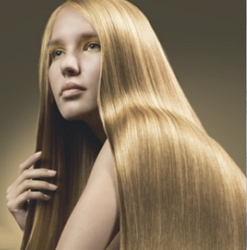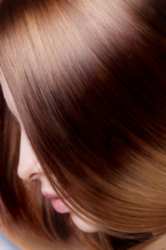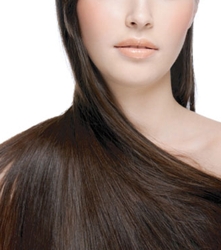|
||||||||||
 |
| June 25, 2013 | To ensure delivery of this email, please add newsletter@hairboutiquemedia.com to your contacts. |
|
Is Your Hair Damaged? Get The Fix! Reader Coupon: Save 20% with BEAUTIFULVIBRANCE20 Overuse of hair color, texturizing or relaxing chemicals, and styling products (dryers, irons, hot rollers) may definitely put your precious tresses at risk of damage. Is your hair damaged? Are there ways to tell for sure? Color related chemicals and/or permanent processing which might include relaxing and chemical straightening may utilize toxic chemicals which can cause further damage. Other causes of damage include allowing hair to be consistently wind blown or exposed to environmental toxins. Also, the harmful rays of the sun may also become temporarily or permanently damaged. How To Diagnose Damaged Hair There are a couple of tests professionals use to determine if their clients are suffering from hair damage or not. 1. Visual Test Look very closely at hair in a mirror with good lighting. Is hair dull, drab and lacking of shine, bounce and body? Does the color look faded? Are there lots of split ends and broken sections of strands? Is hair frizzy, dry, rough to the touch, easily tangled, puffy or generally hard to manage? If the strands have been stripped of their outer protective layer leaving the inner cortex exposed, this could jeopardize the strands leaving them at risk for serious breakage down the road. 2. Snip off a single strand of hair from an area of the head where it is least likely to show up. Hold the strand firmly between the fingers of two hands and gently pull. If the strand snaps quickly, your hair is mostly likely dehydrated. If the strand stretches excessively as you pull, it can mean damage to the protein structure of the hair. 3. End Test If you don’t want to snip strands for testing you can do the end test. Hold a section of hair upside down with the ends pointing upwards towards the sky. Gently brush your fingers over the ends. How do they feel to the touch? Are they soft, or hard, rough, scratchy and brittle? Brittle dry ends suggests damaged hair shafts which are dehydrated and need moisture. 4. Float Test Snip off a single strand of hair from an area of the head where it is least likely to show up. Place the strand into a large glass, bowl or sink filled with water. Healthy hair will float. Damaged hair is more porous than healthy hair. Over porous or damaged hair will sink. 
5. Hair Surface Test Pick up a strand of hair with two fingers in one hand. With the opposite hand run the fingers down the entire length of the strand from roots to ends. Does the hair feel rough to the touch? Does the hair have a variation in thickness? Compare the surface of your hair along different sides of your head to determine if all of the hair is damaged or just certain sections. 6. Elasticity Test Wrap the end of a single strand of hair around your index finger. With your other free hand, tug at the other end. If the strand breaks on a gentle tug, this is a strong indication the hair may be damaged. You can also do an elasticity text when your hair is wet and more easily testable. Take a wet hair strand and slowly pull. Healthy hair can generally stretch up to one third beyond its natural length before easily shrinking back to normal. If hair stretches out more than normal, breaks or doesn’t easily spring back, it’s damaged and may need more protein. 7. Styling Tools Test After you used your comb, brush, pick or other styling tools, check to see if your hair is shedding from the roots or breaking off in the middle of the strands. Look around for little broken hair on the floor, sink or your clothing. If your hair is breaking off in the middle or the ends after you comb or brush it, you most likely have damaged tresses. 8. Sponge Test When hair is seriously damaged by bleach, hair color, chemicals re-texturizers or similar, it mayfeel mushy, limp, super tangled or spongy when wet. Too much water may be absorbed by hair during washing which makes it more difficult for hair to dry, even with a hot blowdryer. When hair is spongy, limp, super tangled or mushy, it is most likely damaged and needs deep conditioning or protein treatments. The Myth Of Too Much Protein For Hair 
Some hair experts suggest using protein masks too frequently may produce damaged tresses which are dry, brittle and over-protein treated. Is that really true? Probably not. Sometimes hair product build-up or overuse may be incorrectly confused with legitimate chemical, heat, environmental or related damage. Ironically when skipping several days between wet cleansing, some hair begins to result in product build-up which leaves hair stiff, coarse and hard to manage. Product build-up is a temporary, not permanent condition. Deep conditioning and hair repair masks are usually free of any toxic chemicals which might further damage fragile strands. Applying a deep conditioner, mask or other repair product to severely damaged hair is much more likely to help treat distressed hair then encourage future breakage. What To Do If Hair Tests Positive For Damage? If hair is completely damaged what are your options? Although many professionals recommend you have all the damaged hair trimmed off, there are options to keeping some of the damage intact while your hair grows out healthier from the roots. These options include, but are not limited to nourishing hair from the inside out with amped up daily hydration,specialty hair vitamins and/or nutrition. You can also undergo professional deep conditioning or protein treatments at a salon or indulge in some DIY hair repair options. Many of the top hair care products companies in the world such as Rene Furterer and Phyto offer a wide range of deep conditioning and product repair options. Even applying jojoba, coconut or other oils to the damaged sections of your hair can help a lot towards healing your damaged tresses. Summary – Is Your Hair Damaged? Are your tresses hair-commercial-perfect or completely fried and full of frizz? Or somewhere in between? There are lots of ways you can hurt your hair, but how much damage are you actually causing? The key to improving the health of your hair and overcoming damage is to first recognize it and then come up with a long term treatment plan. |
|
If you would like to consult with Karen personally about any of your health and beauty questions,
please stop by our Ask Karen page.
We would love your feedback about this newsletter! Share your thoughts and ideas with us! |
 |
 |
 |
 |
 |
 |
| Copyright 1997-2011, hairboutique.com, All Rights Reserved. Terms of Service, Privacy Statement, Advertise, Contact Us, Press |
| Please note that you are receiving this mail because in the past you signed up for the HairBoutique.com mailing list. This mailing is in full compliance with U.S. Federal requirements for commercial e-mail under bill s.1618 Title 111, Section 301, Paragraph (a) (2) (c) passed by the 105th U.S. Congress. |





